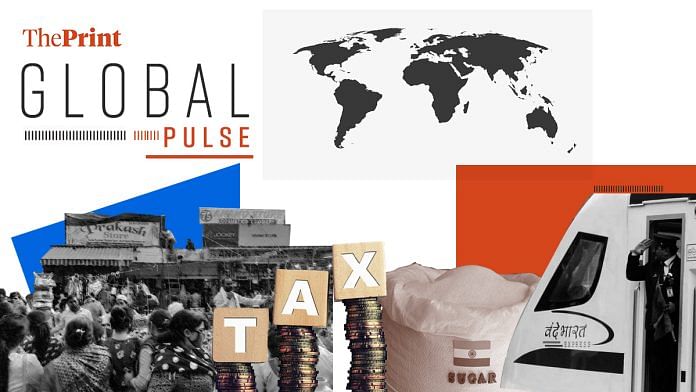New Delhi: The Indian government’s next attempt at tax reform must work, there’s much to lose otherwise.
Andy Mukherjee writes in Bloomberg that Indians who do file taxes—less than 7 percent of the population — are technically the middle class, an electorally crucial voter base, and appeasing them and revamping the tax code is an important agenda for the government.
The goal of the reform should be to simplify the “bewildering array of rules”. Also, India’s tax base is too narrow: nearly 63 percent of those who did file taxes last year “paid nothing”. The wealthy paid extremely little, too.
“While they are vocal about everything from pollution to potholes, most of these wealthy people are internationally mobile, free to up and leave if they don’t like the bargain, and thousands have been doing just that annually in recent years. Together, though, the elite account for less than a fifth of income tax collections,” the piece reads.
But the taxpayers stuck in the middle are the ones who matter politically. This is the group that has been “grumbling” lately about “how badly it’s getting ripped off, not just when it earns, but also when it spends on a new car, or gets lucky in the stock market.”
“High consumption taxes, levies on capital gains, and tolls on badly maintained highways are adding to the unease that too much is being taken away from too few,” writes Mukherjee.
Expanding the tax base lifts the burden on those caught in the middle. But that also presents the Modi government with a philosophical challenge: the government wants investment to lead growth and can’t raise corporate tax rates.
“Since the rewriting of the tax code is happening when people want relief but the government is out of painkillers, there’s anxiety about what will ultimately come out of the exercise,” the piece adds.
That’s why the government has to get it right this time, to allay the “soured sentiment of the salaried class”.
ThePrint’s Economy Editor, T.C.A. Sharad Raghavan, had argued earlier this month for the same: the definition of middle income needs to be expanded, giving those caught in the middle the confidence to spend more and increase demand, which will eventually lift growth.
Global business publications are also fascinated by India’s decision to export one million tonnes of sugar this year. Reuters reports that this is intended to “help mills export surplus stocks from the world’s second biggest producer of the sweetener and help prop up local prices”.
The decision comes as a surprise to some traders, as this year’s production is expected to fall below consumption for the first time in eight years. Maharashtra, Karnataka and Uttar Pradesh account for over 80 percent of the country’s total sugar production, and all three states had lower yields.
“The production could fall to around 27 million tons from last year’s 32 million tons and below annual consumption of more than 29 million tons, according to leading trade houses,” the report says.
India’s sugar export market includes Indonesia, Bangladesh and the UAE. It did not allow exports in the 2023-24 marketing year, which is why this year’s move comes as a surprise. But exporting sugar will help sugar mills reeling from low local prices—currently at their lowest level in the last 1.5 years.
Reuters also reports that India is likely to shift focus from improving road infrastructure to improving railways in the upcoming budget.
“The railways ministry’s budget allocations could rise to between 2.9 trillion rupees and 3 trillion rupees ($33.5 billion-$34.7 billion) for the 2025/26 fiscal year, up from 2.55 trillion rupees, a government source said,” the report says. This increase will fund the expansion of the railway network by over 68,000 km. The goal seems to be to add 400 high-speed Vande Bharat trains by March 2027.
The road transport ministry, on the other hand, is expecting a budget increase by 3-4 percent to about Rs 2.9 trillion ($34.7 billion). Its total spending had risen six-fold in a decade.
But there’s also been a recent drop in road spending. “The road transport ministry spent only 54 percent of its full-year budget in the first eight months of the fiscal year through November, government spending data shows, compared to 76 percent at the railways ministry,” Reuters reports.






